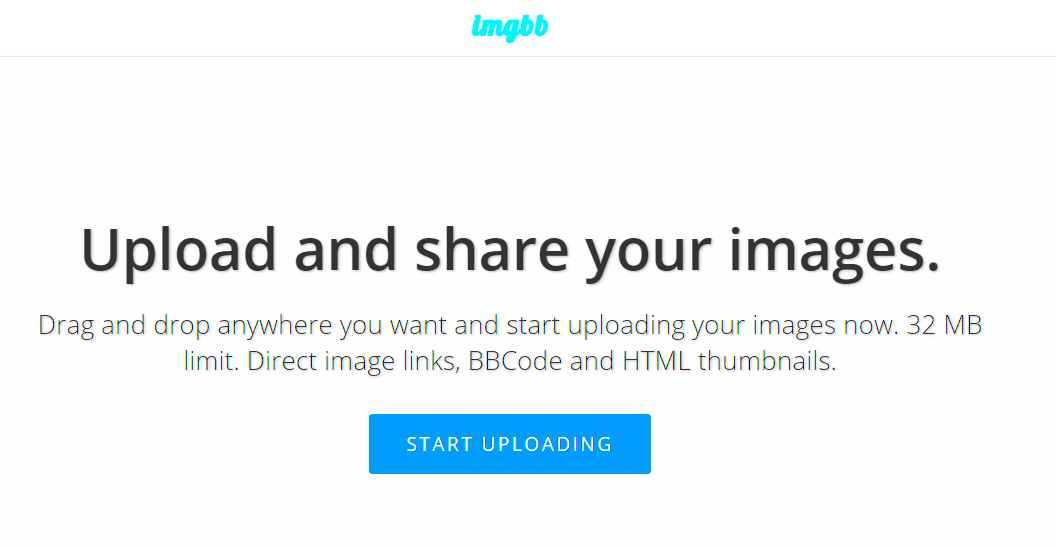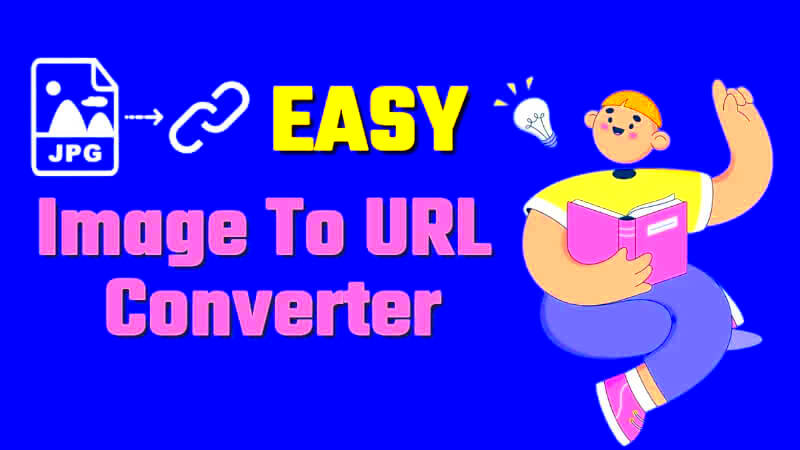Images are a crucial part of online content. Whether you're sharing on social media, creating a blog, or designing a website, having a clear way to link to images is essential. This is where image URLs come in. An image URL is a web address that points directly to an image file on the internet. By using these links, you can easily share and embed images anywhere.
Why are image URLs important? Here are a few reasons:
- Accessibility: Image URLs allow anyone with the link to view the image without needing to download it.
- Storage Efficiency: Instead of uploading images to every platform, you can store them in one place and link to them.
- SEO Benefits: Properly formatted image URLs can improve your search engine ranking, making it easier for people to find your content.
Understanding how to create and use image URLs can significantly enhance your online presence.
How to Convert Your Images to URLs

Converting images to URLs is a straightforward process. Here’s how you can do it:
- Choose a Hosting Platform: First, select a reliable platform to host your images. Popular options include:
- Imgur
- Flickr
- Your own website's server
By following these steps, you can easily create URLs for your images and use them wherever you need.
Also Read This: Understanding YouTube Earnings for 100 Million Views
Using a Bitchute Video Downloader for Image Links
Many people use Bitchute to upload and share videos, but did you know you can also extract images from these videos? Using a Bitchute video downloader can help you create image links efficiently. Here’s how you can do this:
- Select a Bitchute Video: Choose the video that contains the images you want to extract.
- Download the Video: Use a reputable Bitchute downloader tool. Copy the video link and paste it into the downloader. Click the download button to save the video to your device.
- Extract Images: Use video editing software or an online tool to take screenshots of the images you want from the video.
- Upload and Get Image URLs: Upload these extracted images to your chosen hosting platform, then copy the image URLs as described earlier.
Using a Bitchute video downloader not only gives you access to videos but also helps you generate valuable image content for your projects.
Also Read This: Getting Night Shots with an AI Image Generator
Benefits of Turning Images Into URLs
Creating image URLs offers a multitude of benefits that can greatly enhance how you share and manage your online content. When you convert images into URLs, you’re not just making them accessible; you’re also optimizing your workflow. Let’s dive into some of the key advantages.
- Easy Sharing: Image URLs make it simple to share images across different platforms. Instead of sending files, you can just send a link.
- Reduced Storage Needs: By hosting images online, you save space on your local device or server. This is especially helpful for those with limited storage.
- Improved Loading Times: Using URLs can lead to faster page load times, especially if your images are hosted on a dedicated server. This enhances user experience.
- SEO Benefits: Search engines value well-structured URLs. Using descriptive URLs can help improve your site's search rankings.
- Image Management: When images are stored in one location, it becomes easier to manage them, update them, or replace them without the hassle of re-uploading.
Overall, turning images into URLs streamlines your online presence and makes your content more accessible to everyone.
Also Read This: How to Create a YouTube Short Video on Your iPad
Tips for Creating Effective Image URLs
Creating effective image URLs is essential for maximizing their impact and usability. Here are some practical tips to help you craft the best image URLs:
- Use Descriptive Filenames: Instead of generic names like "image1.jpg," use descriptive terms that reflect the content, such as "sunset-beach-vacation.jpg." This improves SEO and clarity.
- Keep URLs Short and Simple: Long URLs can be unwieldy and hard to remember. Aim for concise URLs that still convey meaning.
- Include Keywords: If applicable, include relevant keywords in your image URLs. This can help improve search visibility.
- Avoid Special Characters: Stick to letters, numbers, and hyphens. Avoid spaces or special characters, as they can create issues with linking.
- Use HTTPS: Ensure your image URLs use HTTPS for better security and trustworthiness.
By following these tips, you can create effective image URLs that enhance both user experience and SEO.
Also Read This: Batch Resizing Images in Photoshop Like a Pro
Common Issues When Creating Image URLs
While creating image URLs is generally straightforward, there are some common issues you might encounter. Being aware of these can save you time and frustration:
- Broken Links: If the image is moved or deleted from the hosting platform, the URL will become broken, leading to missing images.
- Incorrect Permissions: Sometimes, image URLs might not work if the permissions are not set correctly. Ensure that your images are publicly accessible.
- Slow Loading Times: If the hosting server is slow or overloaded, it can lead to slow loading times for your images. This can negatively affect user experience.
- SEO Missteps: Using non-descriptive URLs or neglecting to include keywords can impact your search engine optimization. Pay attention to the structure of your URLs.
- Compatibility Issues: Some platforms may not support certain file types or sizes. Ensure your images are in a compatible format.
By being mindful of these common issues, you can avoid pitfalls and create effective image URLs that enhance your content.
Also Read This: Mastering Image Insertion in Krita
Frequently Asked Questions
When it comes to creating image URLs and utilizing them effectively, questions often arise. Here are some frequently asked questions to clarify common concerns:
- What is an image URL? An image URL is a web address that links directly to an image file stored online. It allows users to view or embed the image without needing to download it.
- How do I find the URL of an image? You can find the URL by right-clicking on the image and selecting "Copy Image Address" in most web browsers. Alternatively, you can upload the image to a hosting platform and copy the provided link.
- Can I use image URLs on social media? Yes, you can use image URLs on social media platforms to share images easily. However, be sure that the links are publicly accessible to ensure visibility.
- What formats should I use for image URLs? Common formats include JPG, PNG, and GIF. These formats are widely supported and provide good quality for online images.
- Are there any limitations to using image URLs? Yes, some limitations may include file size restrictions on hosting platforms, potential broken links if the image is moved, and slower loading times if the hosting server is not reliable.
- How can I ensure my image URLs are SEO-friendly? Use descriptive filenames, include relevant keywords, and keep URLs short and simple. Avoid special characters and use HTTPS for better security.
Conclusion and Final Thoughts
Creating and using image URLs effectively can enhance your online content significantly. By understanding their importance, following best practices, and addressing common issues, you can improve accessibility, manage your images better, and even boost your SEO efforts. Embrace the power of image URLs to streamline your online presence and make sharing your visual content a breeze.

 admin
admin








